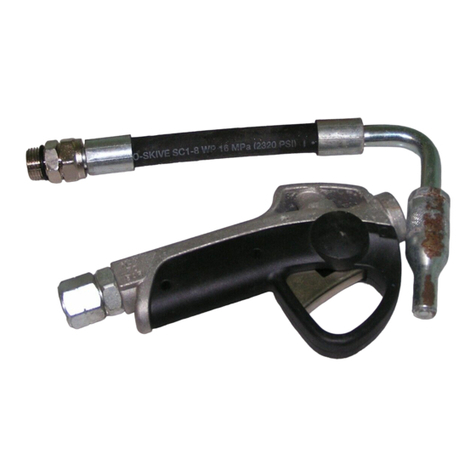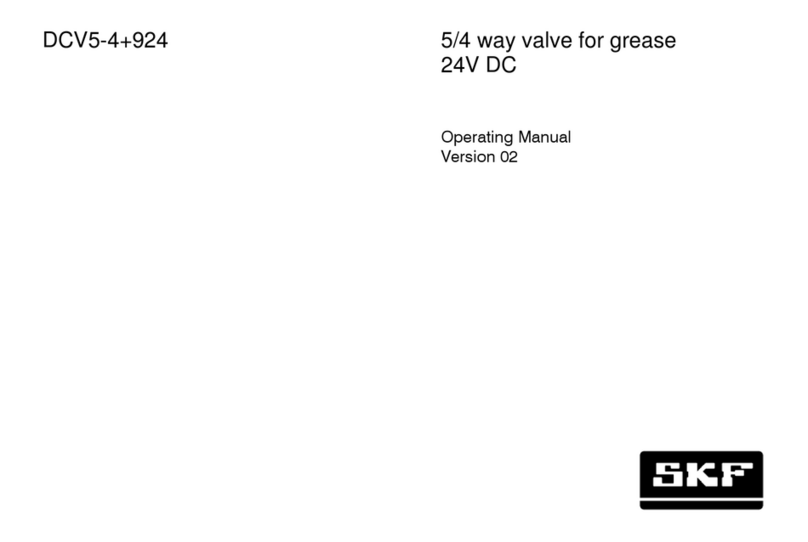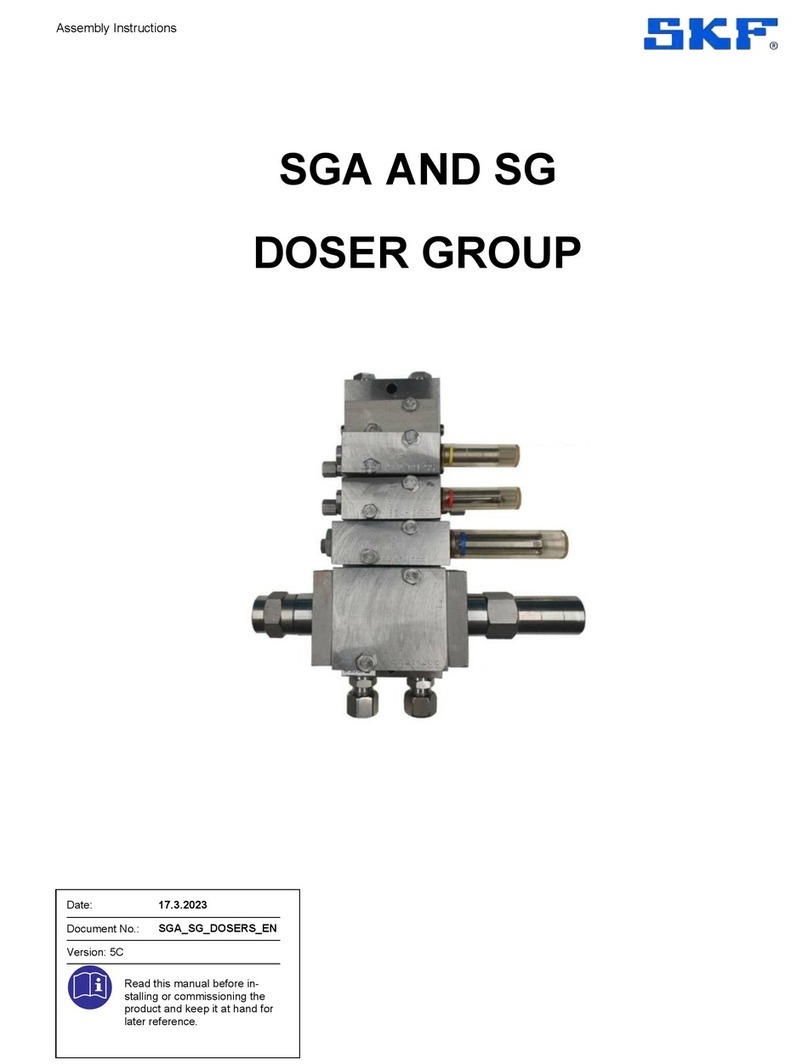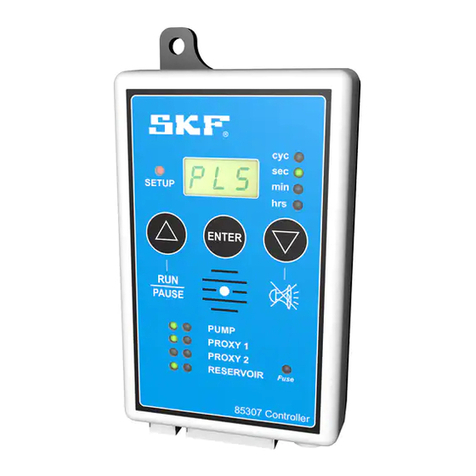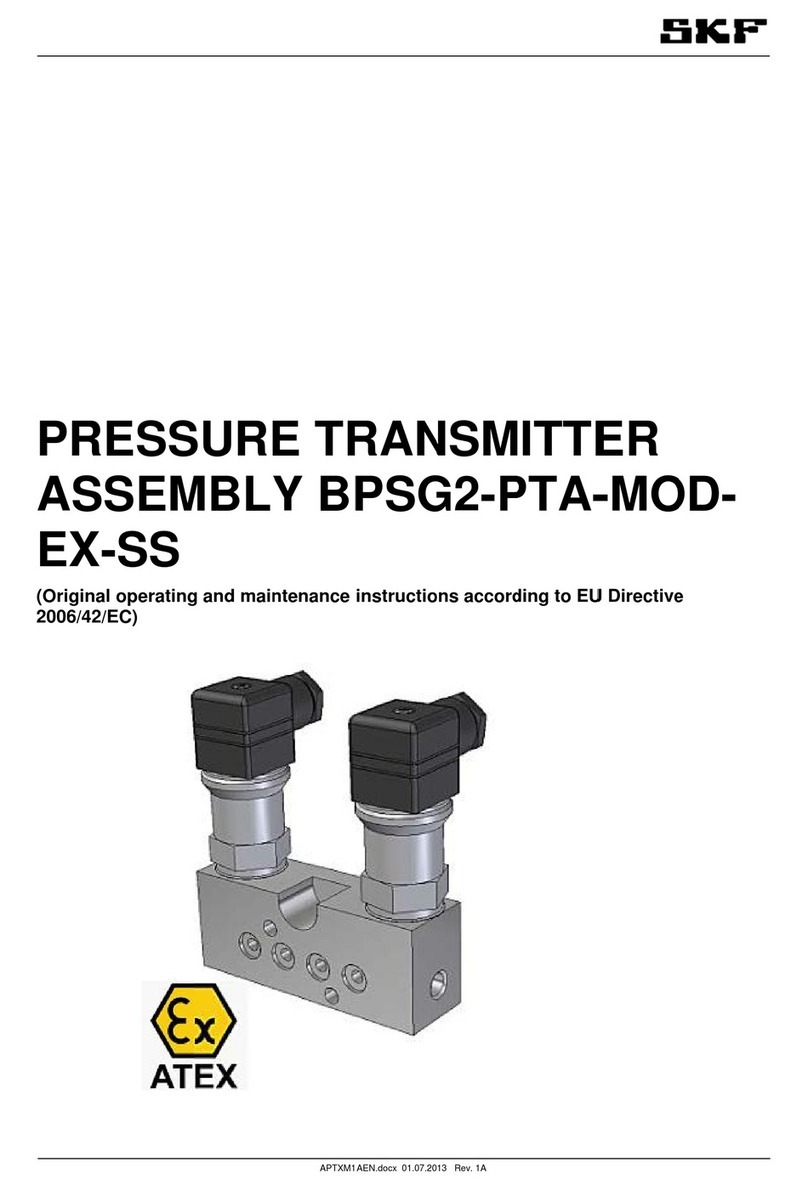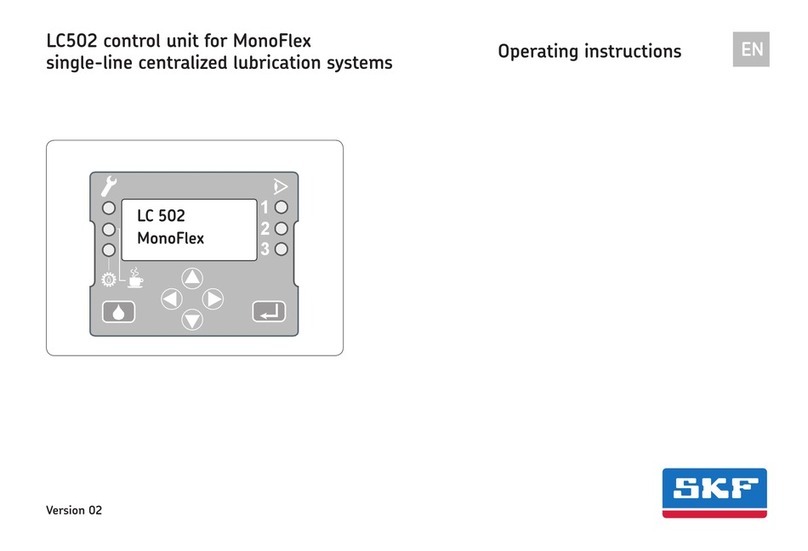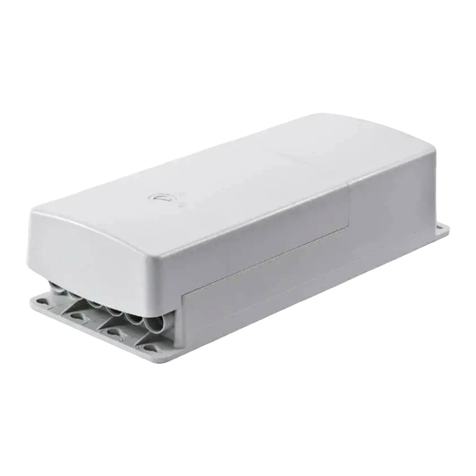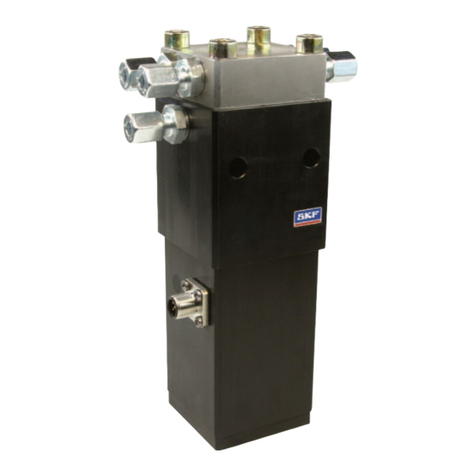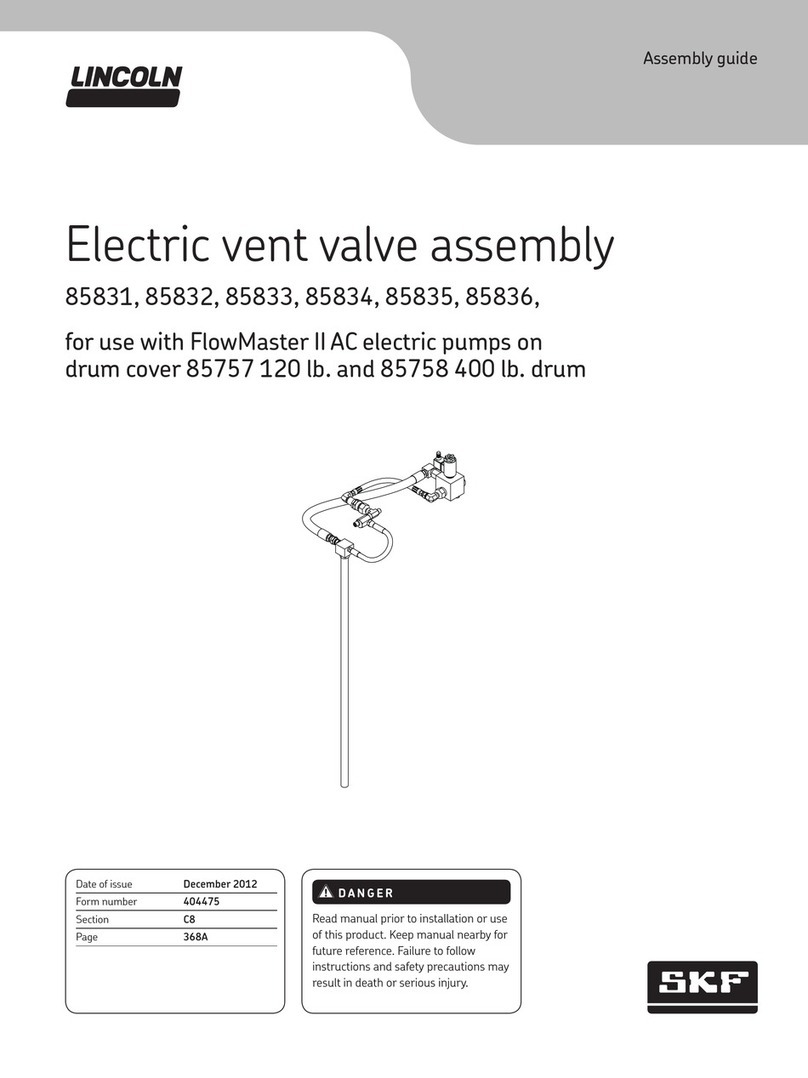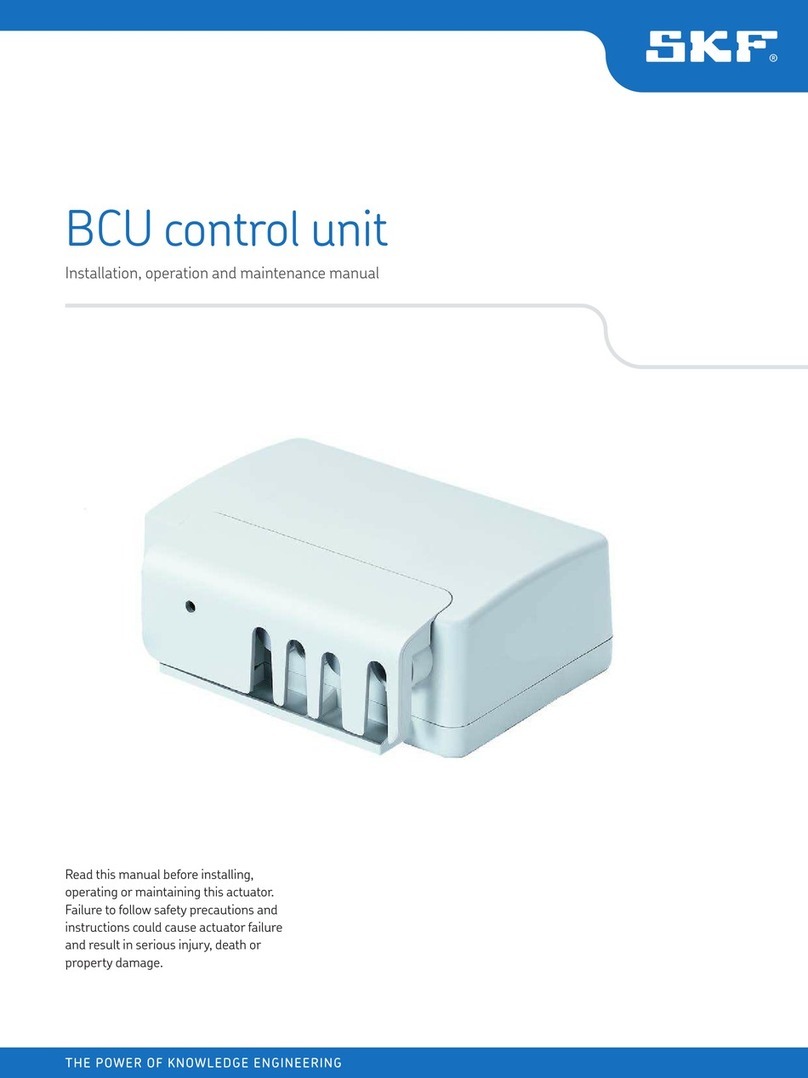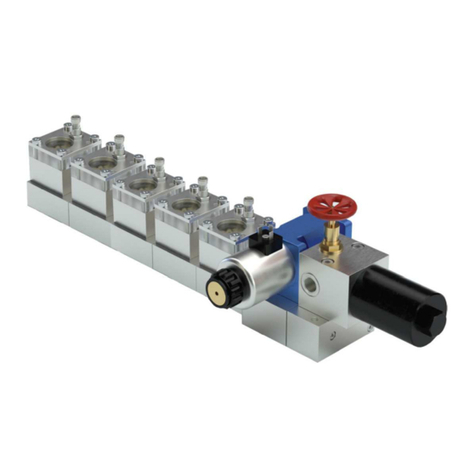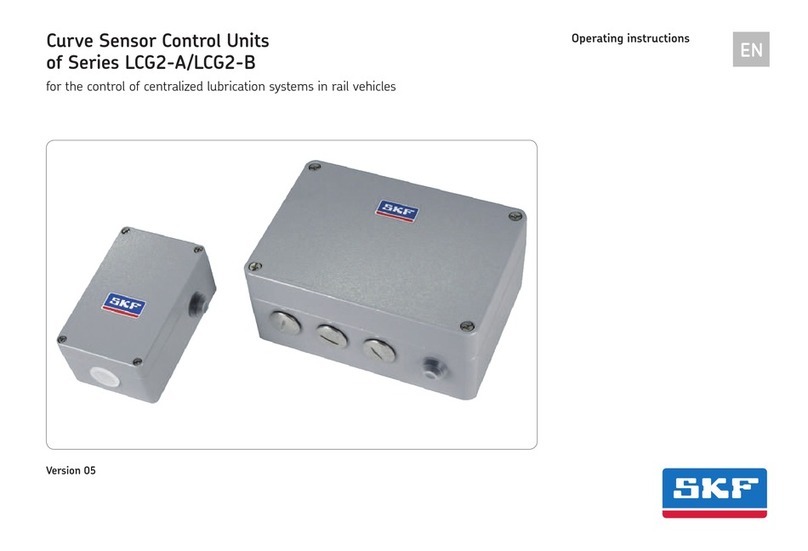
SKF alarm and display module CMPT DCL 3-7
Specifications
Instruction Manual, Revision D
Specifications
3
Power requirements
Supply voltage: 24 V AC/DC (20 to 28 V AC/DC)
Supply current: 200 mA, maximum
Power: 6 W, maximum
Sensor input
Current*: 4 to 20 mA, 0 to 20 mA (Input impedance: 50 W)
Voltage: 0 to 10 V DC (Input impedance: 100 KW or greater)
0 to 1 V DC, O to 5 V DC, 1 to 5 V DC
Thermocouple: K, J, R, S, B, E, T, N, PL-II, C (W/Re5-26).
External resistance 100 W or less
RTD: Pt100, JPt100 three wire system.
Allowable input wire resistance 10 W or less per wire
*50 W shunt resistor (0.1% precision) required at input terminals (not included)
Alarm function
LED event lamp on front display (red)
Relay contact: 48 V DC or AC / 1,0 Amp, maximum
Programmable
üAlarm setting value
üOptional alarm on HIGH limit, LOW limit, HIGH-LOW limit, HIGH-LOW range limit
üOptional Normally Open or Normally Closed relay contacts
üOptional Non-latching or latching relay contacts
üVariable time delay (0 to 9 999 seconds)
Output
Analog output signal (4 to 20 mA) proportional to scaled input
Digital display
Four H/7,4 mm x W/4 mm high-red LEDs,
Scaleable for vibration (gE, g , mm/s, inch/s), temperature (°C, °F)
Operating environment
Operating temperature: -10 °C to 50 °C (14 °F to 122 °F)
Storage temperature: -25 °C to 65 °C (-13 °F to 149 F°)
Humidity: 85 % maximum
IP rating: 30
Mechanical
Weight: 0,12 kg (0.27 lbs)
Enclosure: Polyethylene and PET resin
Color: Gray with green terminals
Connectors: One 4–pole screw clamp type/
0ne 5-pole screw clamp type (10 total)
Wiring: Power and analog output 0,2 mm to 1,5 mm
diameter (0.008 inch to 0.06 inch)
Input and relay out 0,2 mm to 0,5 mm diameter
(0.008 inch to 0.03 inch)
Mounting: 35 mm DIN-rail type EN50022
Dimensions (W x H x D): 22,5 x 75 x 100 mm (0.89 x 2.95 x 3.94 inches)
Approval
CE

